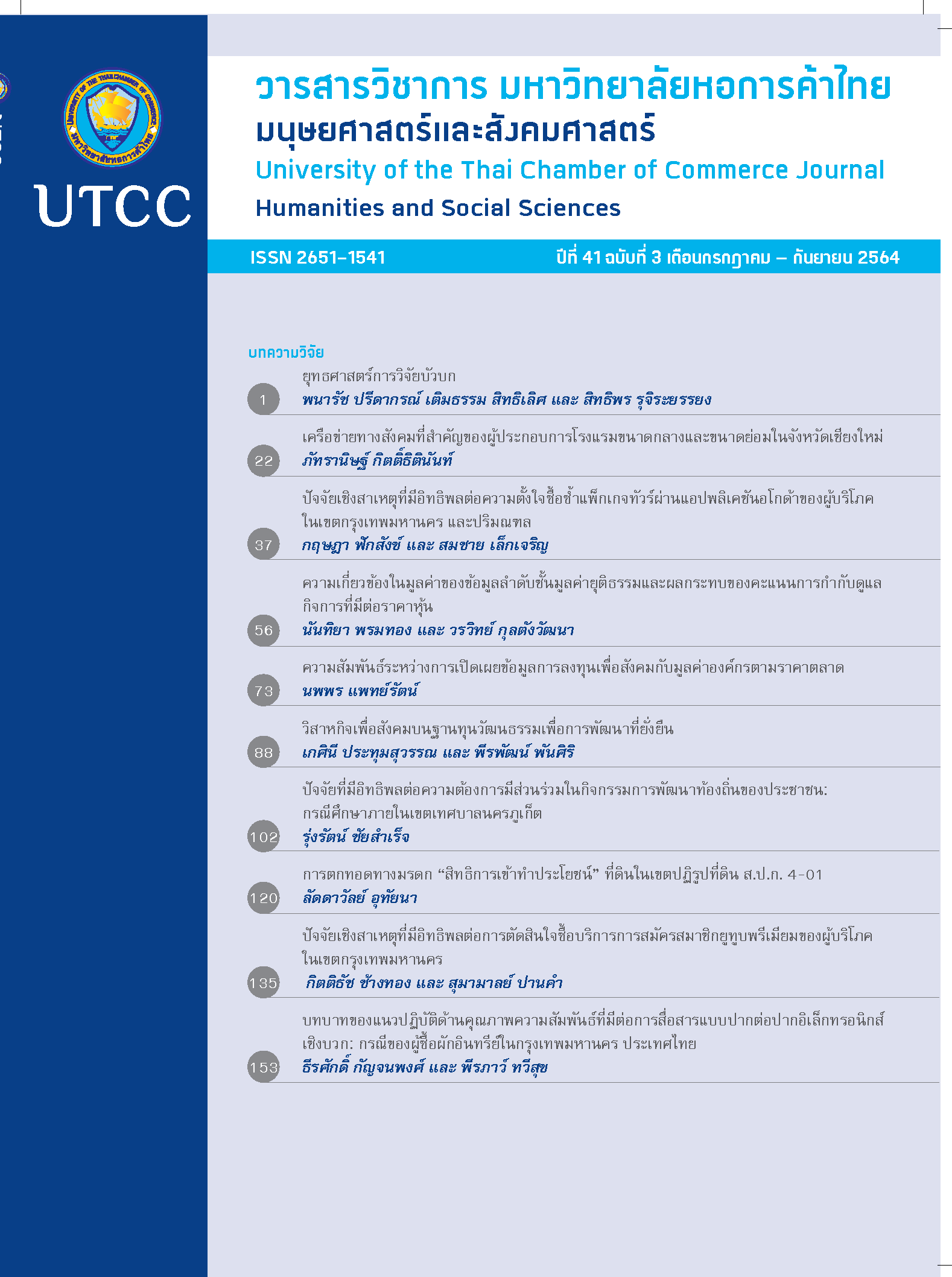Research Strategies for Gotu Kola
Main Article Content
Abstract
The objective of the research project titled research strategies for gotu kola is to create research strategies and policy recommendations in order to determine directions and goals in promoting and supporting research on gotu kola, which is in line with the National Master Plan on Thai Herb Development No. 1 (2017-2021), the 20-year Agriculture and Cooperative Strategy (2017-2036) of the Ministry of Agriculture and Cooperatives. The study uses secondary data related to the context in the development of research on gotu kola and primary data from in-depth interviews and brainstorming from knowledgeable people, experts, researchers, research-related personnel and those in the production sector of herbs from the upstream, midstream, and downstream levels; hence, resulting in sufficient detailed information to be used to formulate strategies based on academic principles. The study found that, there is market for essential substances triterpenoids. Triterpenoids have 4 compounds that associated with different properties, which create consequent demands for various purposes. Problems that need research to help solve are the management of contaminated gotu kola planting plot, high level of essential substances extraction, and the development of downstream products that have properties and styles that are more responsive to the market. The researchers have established research strategies for gotu kola covering the upstream, midstream and downstream levels. Each strategic issue consists of various strategies and guidelines in the form of projects/research in order to grant research funding. Finally, the researchers provided relevant policy recommendations, in order to propel the research strategies in an efficient manner.
Article Details

This work is licensed under a Creative Commons Attribution-NonCommercial-NoDerivatives 4.0 International License.
ลิขสิทธิ์ของบทความ
ผลงานที่ได้รับการตีพิมพ์ถือเป็นลิขสิทธิ์ของมหาวิทยาลัยหอการค้าไทย ห้ามมิให้นำเนื้อหา ทัศนะ หรือข้อคิดเห็นใด ๆ ของผลงานไปทำซ้ำ ดัดแปลง หรือเผยแพร่ ไม่ว่าทั้งหมดหรือบางส่วนโดยไม่ได้รับอนุญาตเป็นลายลักษณ์อักษรจากมหาวิทยาลัยหอการค้าไทยก่อน
References
กระทรวงสาธารณสุข. (2562). แผนแม่บทแห่งชาติว่าด้วยการพัฒนาสมุนไพร ฉบับที่ 1 พ.ศ. 2560-2564. นนทบุรี: ผู้แต่ง.
กฤษณ์ พงศ์พิรุฬห์, อารียา จิรธนานุวัฒน์ และภานุพงษ์ ภู่ตระกูล. (2562). สถานการณ์การวิจัยสมุนไพรไทย: การทบทวนวรรณกรรมอย่างเป็นระบบและข้อเสนอเชิงนโยบาย. วารสารการแพทย์แผนไทยและการแพทย์ ทางเลือก, 17(2), 292-304.
พนารัช ปรีดากรณ์, แพรดาว ฟูพาณิชย์พฤกษ์, เติมธรรม สิทธิเลิศ, สุภาวดี เหล่าฤทธิรัตน์ และลลิดา ปรีดากรณ์. (2563). ยุทธศาสตร์การวิจัยการเกษตรรายสินค้า: ขมิ้นชันและบัวบก. กรุงเทพฯ: สำนักงานพัฒนาการวิจัยการเกษตร.
ภาสวีร์ จันทร์สุก, วิริยาพร ศิริกุล, และชุติมน หมื่นแก้ว. (2555). รูปแบบนวัตกรรมของการนำส่งยาสมุนไพร. วารสารก้าวทันโลกวิทยาศาสตร์, 12(1), 37-47.
สำนักงานพัฒนาวิทยาศาสตร์และเทคโนโลยีแห่งชาติ. (2561). โครงการศึกษาโอกาสทางการตลาดสมุนไพรไทยเป้าหมาย. ปทุมธานี: ผู้แต่ง.
สุรพจน์ วงศ์ใหญ่. (2555). บทวิเคราะห์ด้านวิทยาศาสตร์และเทคโนโลยีเพื่อเตรียมความพร้อมภาคอุตสาหกรรมสมุนไพรไทยเข้าสู่ ASEAN Harmonization. กรุงเทพฯ: สำนักงานพัฒนาวิทยาศาสตร์และเทคโนโลยีแห่งชาติ.
Netinbag. (ม.ป.ป.). Kampo คืออะไร. สืบค้นเมื่อ 18 เมษายน 2564, จาก https://www.netinbag.com/th/medicine/what-is-kampo.html
Smith, T., Gillespie, M., Eckl, V., Knepper, J., & Reynolds, C. M. (2019). Herbal Supplement Sales in US Increase by 9.4% in 2018. Herbalgram: The Journal of The American Botanical Council, 123, 62-73. Retrieved from https://www.herbalgram.org/media/14003/issue123.pdf
WHO Expert Committee on Specifications for Pharmaceutical Preparations, thirty-fourth report. (1996). Geneva: World Health Organization.


